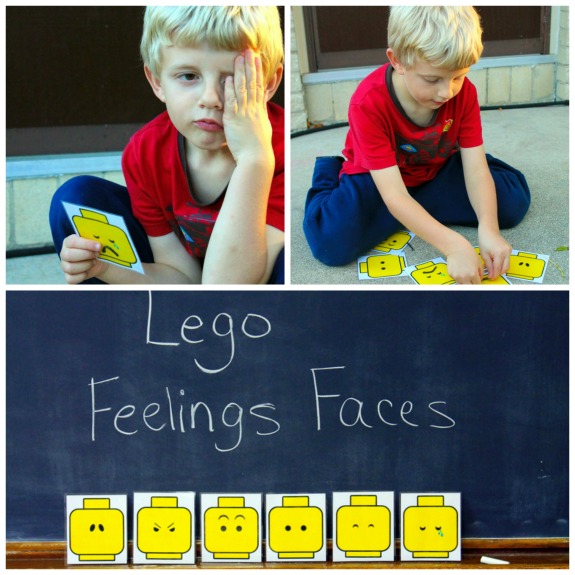It’s a rainy Friday evening. My youngest and I are snuggled in a red fleece blanket enjoying A Ball for Daisy, a picture book by Chris Raschka.
“She is happy!” Owen tells me, pointing to a picture of Daisy carrying her ball to the park.
“How do you know she feels happy?” I ask him.
“She is smiling. She has a ball.”
“What makes you feel happy?”
Owen thoughtfully twirls his hair and replies, “Cookies make me happy. Batman. Mommy. Animals.”
“Show me your happy face!”
He squints his eyes tightly and gives me a huge smile that I like to call “The Cheesy Cheese Face.”
Teaching a child to recognize and manage their own emotions and the emotions of others is one of the greatest gifts you can give them. This important life skill is essential to building relationships, gaining problem solving skills, and growing with empathy for others. Listed below are four tips for raising empathetic children.
1. Teach feelings through didactic instruction.
As you read books with your child or watch a television program together, point out the characters’ facial expressions, body language, and situation. Invite your child to pretend that he is a detective searching for clues as to how the character feels. Teach your child how the human body reacts to anger, fear, happiness, and sadness.
2. Teach feelings through a hands-on activity.
I designed Lego Feelings Faces for the elementary school aged children that I work with as a counselor. The Feeling Faces have expressive eyes, but no mouths. I invite students to use Wiki Stix to complete the faces. When they are finished, I ask them to pull out the face that shows how they are feeling that day. We then talk about their feelings and how to cope with them.
3. Teach feelings through personal connections.
As your child learns to identify new feelings, ask him to connect them to a time that he experienced them. When Colin saw Owen crying while trying to put on his shoes last week, he said, “You feel frustrated. I know how that feels. I will get Mommy to help you.” Personal connections enable a child to use empathy while interacting with others.
4. Talk about your own feelings.
Appropriately discussing your emotions will help your child talk about their own because it creates a safe environment for sharing. Be mindful of demanding your child to “stop crying” or to “turn it around” if they are experiencing sadness or anger. Instead, allow your child to safely experience his emotions as you teach him coping skills such as deep breathing or counting.
Teaching a child social-emotional skills is an education for their heart and mind and will help them grow to be a well-adjusted, empathetic adult.
How do you teach feelings to your children?











Thanks for these tips. My daughter has little to no empathy. I assume it was from being adopted from a terrible orphanage and problems associated with that situation. However, she hasn’t been able to teach empathy (or even thought about teaching it) to her little boy. He is a little aware of the emotions of others but these ideas will help me work with him. Isn’t it odd that empathy is something to be taught? Until my daughter I had never thought of that as a skill that needs to be learned.
Empathy can be “taught” with honesty of emotion. Modeling empathy by displaying a reverence for all living things. Catching a bug and putting it outside, or stopping to pick up a turtle or slug and place it out of harm’s way off the path. Sometimes, sitting and observing other people and talking about how that might be feeling, like a beggar, or an old person in a wheelchair, or a baby crying.
Empathy teaching, like al l “teachable moments”, arise throughout each and every day.